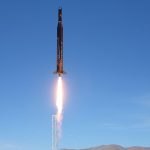Using math to investigate possibility of time travel0
- From Around the Web, Science & Technology
- May 12, 2017
Mathematical model of a ‘TARDIS’ takes the ‘fiction’ out of science fiction

Mathematical model of a ‘TARDIS’ takes the ‘fiction’ out of science fiction

Researchers believe their surgery-assisting robot is capable of performing complex brain surgeries. The machine can reduce the time of surgeries by cutting down the time it takes to cut into the skull from two hours to two and a half minutes.

Axions don’t show up yet, but that doesn’t mean they’re not out there.

Researchers from the University of Antwerp and KU Leuven (University of Leuven), Belgium, have succeeded in developing a process that purifies air and, at the same time, generates power. The device must only be exposed to light in order to function.

Figuring out how plasma bubbles and blobs affect one another and ultimately the transmission of communications, GPS, and radar signals in Earth’s ionosphere will be the job of a recently selected CubeSat mission.

More tests are on the horizon

Made In Space, Inc. is known as the company behind the 3D printers on board the International Space Station. Astronauts have used the startup’s AMF, or Additive Manufacturing Facility, on the ISS to churn out everything from finger splints to tools, sculptures and even other printer parts.

Researchers created souped-up algae that can thrive outdoors

Tokamak Energy’s fusion reactor has achieved first plasma and is on track to produce temperatures of 100 million degrees Celsius (180 million degrees Fahrenheit) by 2018.

Anxiety — that feeling of dread, fear, worry and panic — is certainly nothing new. Hippocrates wrote about it in the fourth century BCE. As did Søren Kierkegaard in the 1860s. And Sigmund Freud addressed the disorder in 1926.
However, jump to the present and we’re seeing a significant uptick — especially with youth.



